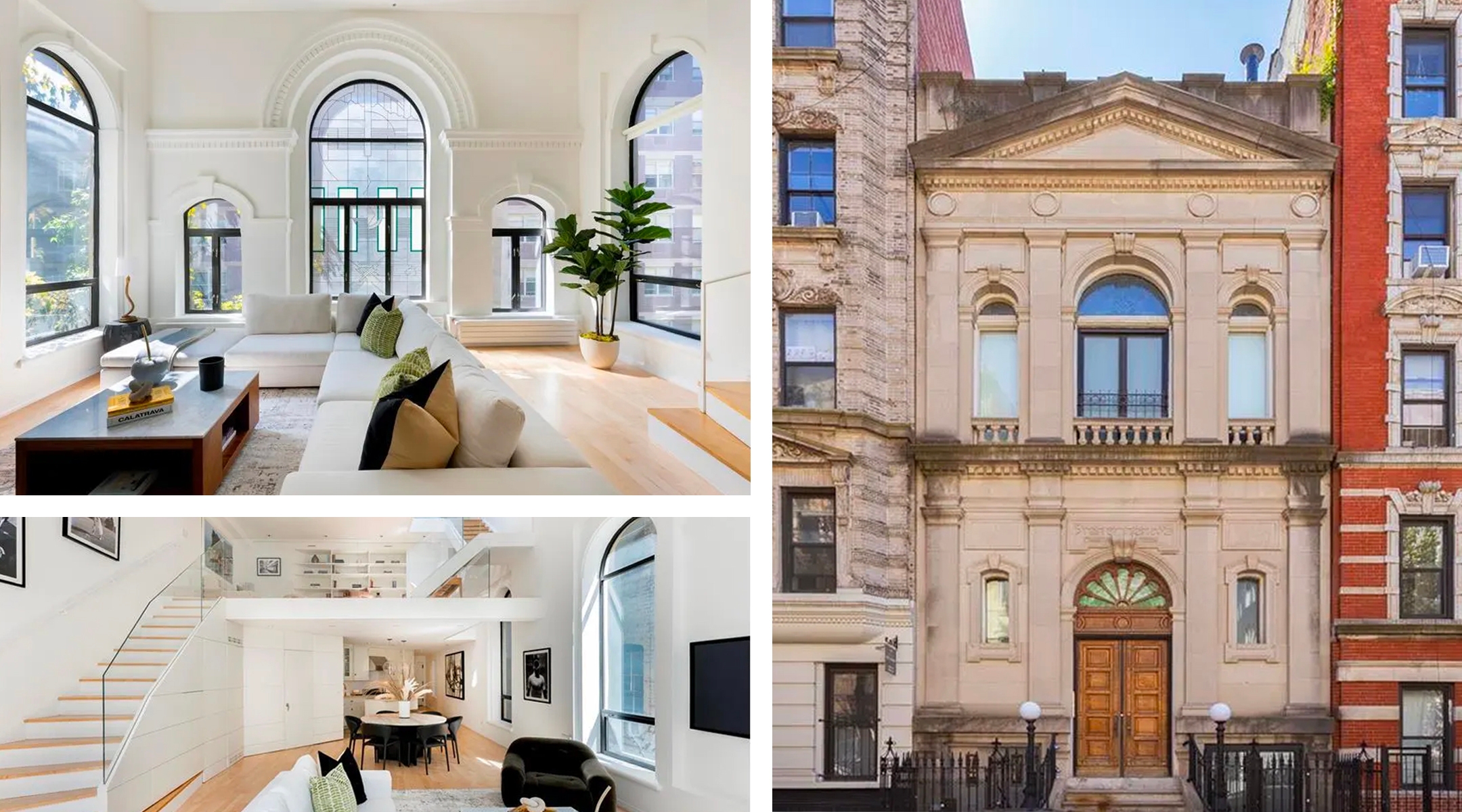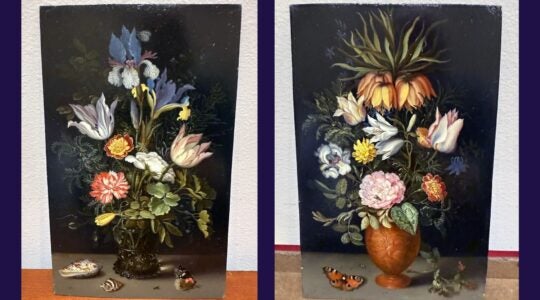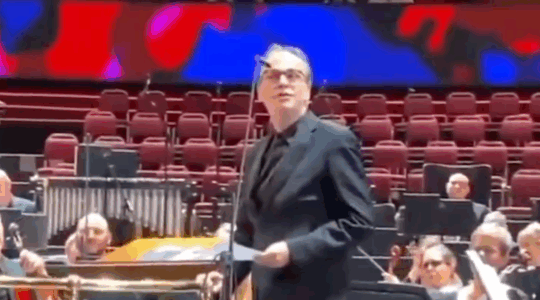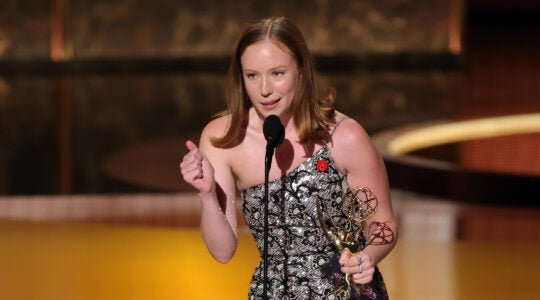(New York Jewish Week) — Anyone can pray in a synagogue. But have you ever fantasized about living in one?
Well, if you will it — and you happen to have $2.3 million handy — it is no dream: An East Village penthouse is on the market in a building that was constructed in 1908 as Congregation Beth Hamedrash Hagadol Anshe Ungarn (The Great House of Study of the People of Hungary).
The 1,600-square-foot renovated triplex at 242 East 7th St. boasts a wealth of amenities, including three exposures, a 400-square-foot private terrace, a master bedroom with an “Aspen lodge aesthetic” and an en-suite bathroom that appears to be the size of a studio apartment.
The unit is fully modern and does not have any original details — and according to listing agent Jason Lanyard of Douglas Elliman, that’s a good thing. “What I have found is that owners here [in NYC] love the provenance of a building, but they love that they don’t feel the provenance,” he told the New York Jewish Week.
The synagogue was in operation until the mid-1970s and was converted into a cooperative apartment in the mid-1980s. “Somehow when they made the conversion to a co-op, with the exception of the exterior of the building, they sort of scrubbed it of any Judaic content,” he said.
By contrast, the exterior of the building — which is located between Avenues C and D — boasts the name of the congregation in its original Hebrew lettering. The structure was designated a landmark in 2008 as “a fine example of an early 20th century Classical Revival style synagogue surviving on Manhattan’s Lower East Side,” according to New York City’s Historic Districts Council.
First established in the Lower East Side in 1883, the Congregation Beth Hamedrash Hagadol Anshe Ungarn was one of the earliest Hungarian congregations in New York. After outgrowing several previous sites, in 1908 the congregation purchased a house on East 7th Street “and spent $10,000 rebuilding it with a brick and stone façade in the then popular Beaux Arts style,” according to the Greenwich Village Society for Historic Preservation.
The synagogue was designed by architects Samuel Gross and Joseph Kleinberger of the firm Gross & Kleinberger. The pair designed many tenement buildings on the Lower East Side as well as larger apartment buildings in Upper Manhattan.
In designing the small building on East 7th Street, “the architects created a highly detailed façade that is more rich and varied than many Lower East Side synagogue buildings,” according to the society.
Approximately 100,000 Jews came to New York City from Hungary, as part of a wave of Jewish immigration between 1848 and 1914. “Like others coming from the expanded Austro-Hungarian Empire, the earliest immigrants tended to be more highly educated and left their homelands because of political dissent,” writes the Landmarks Preservation Society, “while those who came after 1880 tended to be laborers, artisans and trades people who came for economic gain.”
The congregation’s relative wealth is is reflected in the building’s design: The limestone facade “exhibits highly developed details and fine workmanship, expressive of the aspirations of the congregation, one of the luckier and more established ones which could afford to build a home of its own,” according to the Greenwich Village Preservation Society.
More than 100 years later, the now-residential, five-unit building stands as a testament to a different sort of wealth. Interest in the unit, said Lanyard, which originally was listed in September at $2.4 million, has been extremely high: “It was a sleeper until the day after Christmas,” he said. “It’s been crazy ever since.”
The city’s real estate market has been very busy these past few weeks, said Lanyard, who surmised that the triplex’s loft-style layout is a major source for its popularity among prospective buyers. “Lofts in the East Village are not common,” he said. “In many ways, it’s a synagogue that gave us a loft. It’s just so heartwarming.”
“How great it is that a converted synagogue thrives so much,” he added.
The New York Jewish Week brings you the stories behind the headlines, keeping you connected to Jewish life in New York. Help sustain the reporting you trust by donating today.





